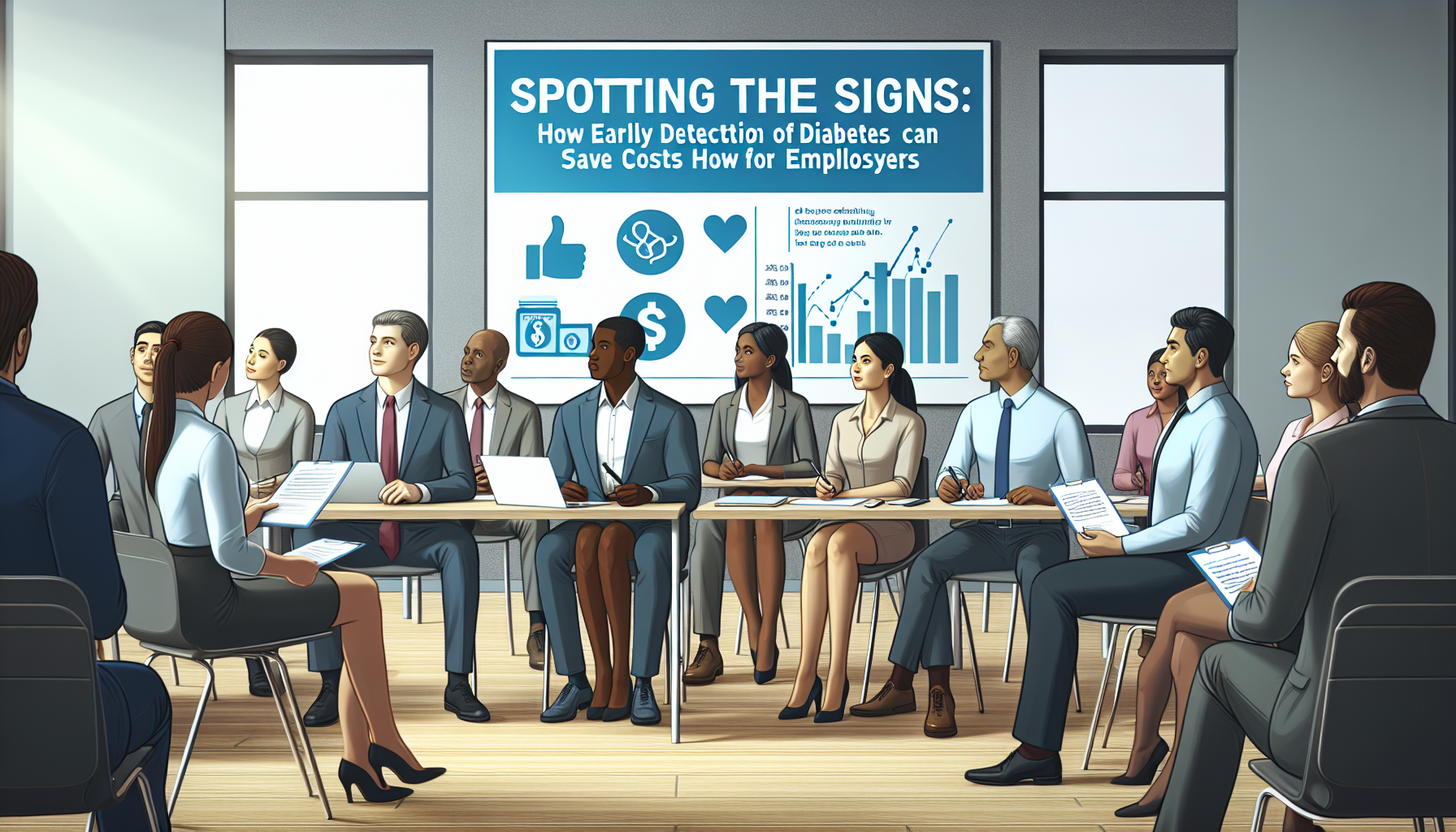Health
Spotting the Signs: How Early Detection of Diabetes Can Save Costs for Employers

Meta Description: Early detection of diabetes not only aids in individual health but also significantly cuts costs for employers. Discover how spotting the signs early can save your company money and promote a healthier workforce.
Imagine this: You’re at work, and one of your team members starts feeling persistently tired or is bringing snacks every few hours because they can’t keep their energy up. These could be warning signs of diabetes—a condition that, if caught early, can lead to significant cost savings for employers. In this article, we’ll dive into how early detection can be a game-changer for both employees and businesses alike.
Why Early Detection Matters
Diabetes is one of those diseases that often flies under the radar until it’s too late. According to the Centers for Disease Control and Prevention (CDC), nearly 1 in 10 Americans has diabetes, and countless others are unaware they have it. Early detection could not only help individuals manage their condition better but could also ease the financial burden on employers.
The Financial Impact of Diabetes
So, why should employers care? Well, the numbers speak for themselves. The American Diabetes Association reports that diabetes costs employers about $327 billion each year in medical expenses and lost productivity. Now, that’s a hefty sum! By recognizing the signs of diabetes early, employers can potentially save on:
- Health Insurance Premiums: Preventative care means fewer claims.
- Employee Absenteeism: Managing diabetes reduces sick days.
- Productivity Loss: Healthy employees perform better.
Common Signs of Diabetes to Watch For
If you’re an employer or even just a concerned colleague, it’s crucial to recognize early signs of diabetes among the workforce. Here are some key indicators:
- Frequent Thirst and Hunger: If someone can’t seem to quench their thirst or is snacking frequently, it could be a red flag.
- Fatigue: A coworker who’s constantly tired might be dealing with more than just lack of sleep.
- Unexplained Weight Loss: Losing weight without trying is a significant symptom of diabetes.
- Frequent Urination: If someone is always making trips to the restroom, it’s worth investigating.
- Blurred Vision: Changes in eyesight can be linked to high blood sugar levels.
Encouraging Regular Screenings
To prevent long-term complications, it’s essential to encourage regular health screenings in the workplace. Most diabetes cases can be managed effectively if caught early, leading to a healthier workforce and, ultimately, lower costs for employers. Here’s how to encourage your employees to stay on top of their health:
- Health Screenings at Work: Organizing annual health fairs can provide easy access to screening tests. You can partner with local clinics or hospitals that offer these services.
- Awareness Campaigns: Implement educational sessions about diabetes and its warning signs. Knowledge is power, and it can motivate employees to take action.
- Incentives for Healthy Behavior: Offer incentives for employees who participate in wellness programs or regular screenings. This could be discounts on health insurance, gym memberships, or other wellness perks.
The Role of Nutrition and Lifestyle Choices
Adopting healthier eating habits and lifestyle changes can significantly influence diabetes management and even prevent its onset. Employers can create a healthier work environment in the following ways:
- Healthy Snack Options: Replace vending machine chips and soda with nuts, fruits, and low-sugar options.
- Encourage Physical Activity: Organize walking meetings or company fitness challenges. A simple stroll can help maintain metabolic health.
- Support Mental Health Initiatives: Stress can contribute to unhealthy eating and lifestyle choices, so providing mental wellness resources is vital.
Alternatives to Traditional Healthcare Approaches
Employers looking for innovative ways to manage employee health might consider alternatives such as:
- Telemedicine Services: Offering remote consultations can help employees quickly address health concerns without the barriers of time and travel.
- Wellness Apps: Consider subsidizing or partnering with wellness apps that help monitor health metrics, suggest workouts, and track nutrition.
The Bigger Picture: Employee Well-being
Let’s be real: when employees feel good, they work better. Prioritizing health isn’t just a cost-saving measure; it’s a way to cultivate a supportive workplace culture. By investing in employee health and early detection efforts, you will foster loyalty, improve morale, and reduce turnover.
The Bottom Line
Ultimately, spotting the signs of diabetes early can be a win-win for both employees and employers. By promoting health awareness and early detection, organizations can improve employee well-being and experience substantial financial savings. Plus, who wouldn’t want to work in an environment that genuinely cares about its team?
Get Started Today!
Want to learn more about how to foster a healthier workplace? Check out our other articles on wellness programs and employee health initiatives at NewsDayBreak’s Wellness Section.
And remember, early detection is key! The sooner you spot potential health issues, the easier they are to manage, and that’s something everyone can get behind. For a deeper dive into diabetes and associated costs, don’t miss this insightful article from the American Diabetes Association.
So let’s get out there and start spotting those signs! Your team—and your bottom line—will thank you for it!
-

 News21 hours ago
News21 hours agoTeenage US Citizen Records Brutal Arrest by Immigration Agents Who Told Him, ‘You Have No Rights’
-
News20 hours ago
Maltese Police Officers Participate in Operation in the Black Sea
-

 Business21 hours ago
Business21 hours agoNavigating the Economic Landscape: Key Insights from Today’s Business Headlines
-

 News19 hours ago
News19 hours ago“Honoring Ukraine: A Tribute” (July 26, 2025) — dynamo.kiev.ua
-

 Business20 hours ago
Business20 hours agoNavigating the Shifting Sands: Key Global Economic Trends for 2024
-

 Entertainment21 hours ago
Entertainment21 hours agoCinematic Success: Fun Facts About Movies That Shaped the Film Industry
-

 Business18 hours ago
Business18 hours agoThe Top 10 Business Opportunities to Watch in 2025
-

 Entertainment20 hours ago
Entertainment20 hours agoBehind the Magic: Unveiling the Secrets of Iconic Film Productions
